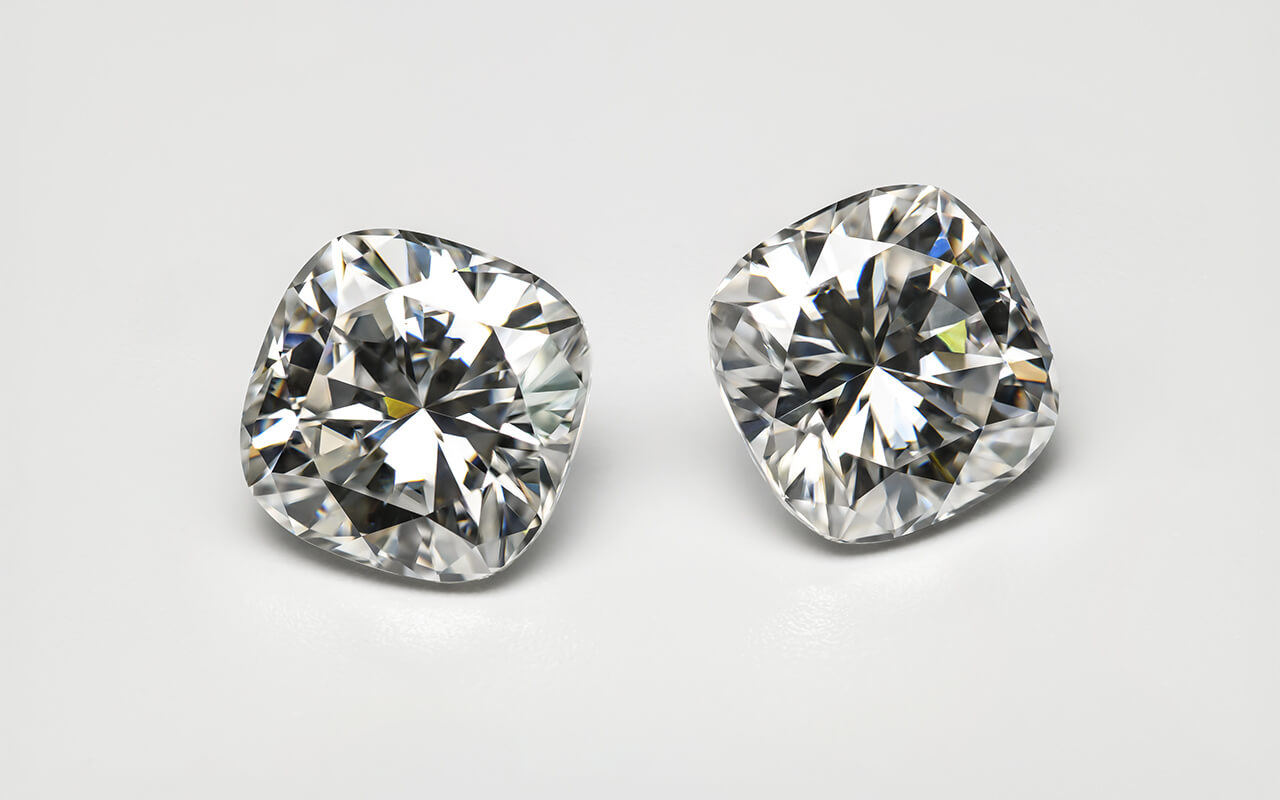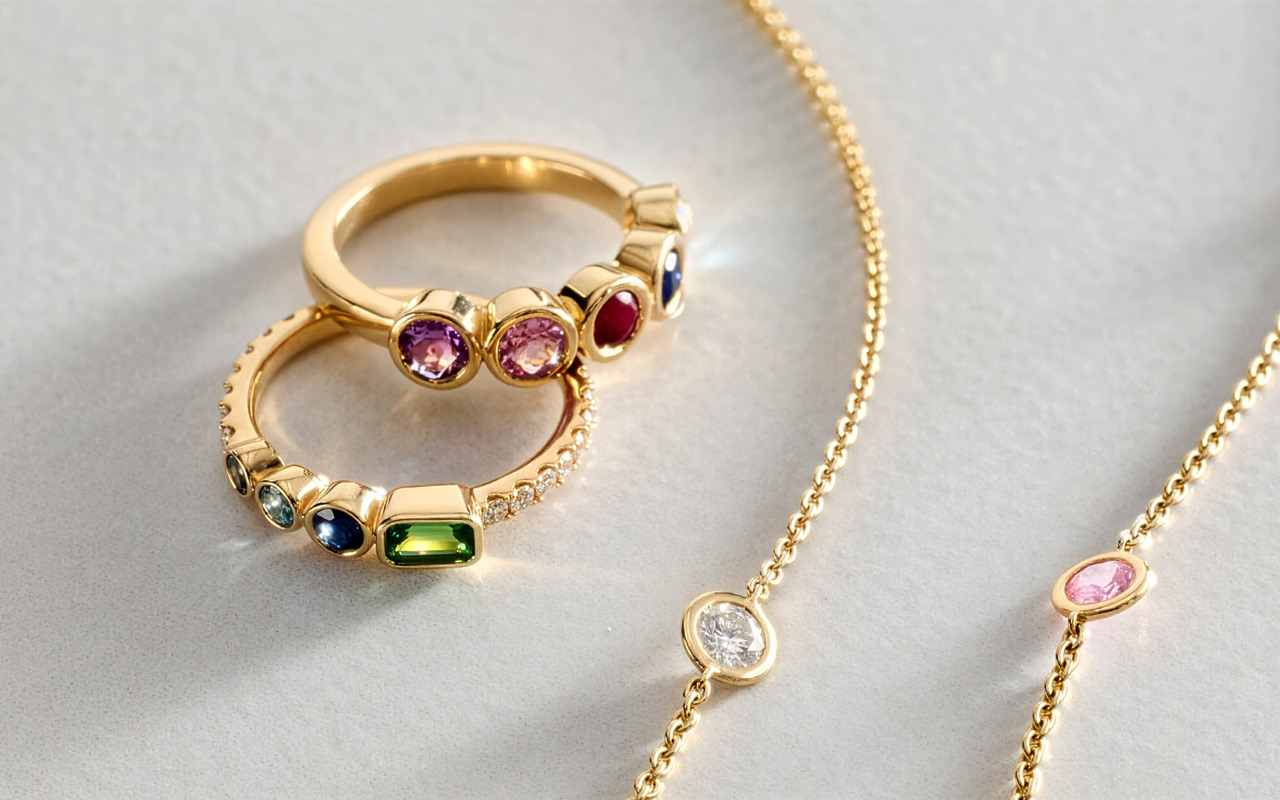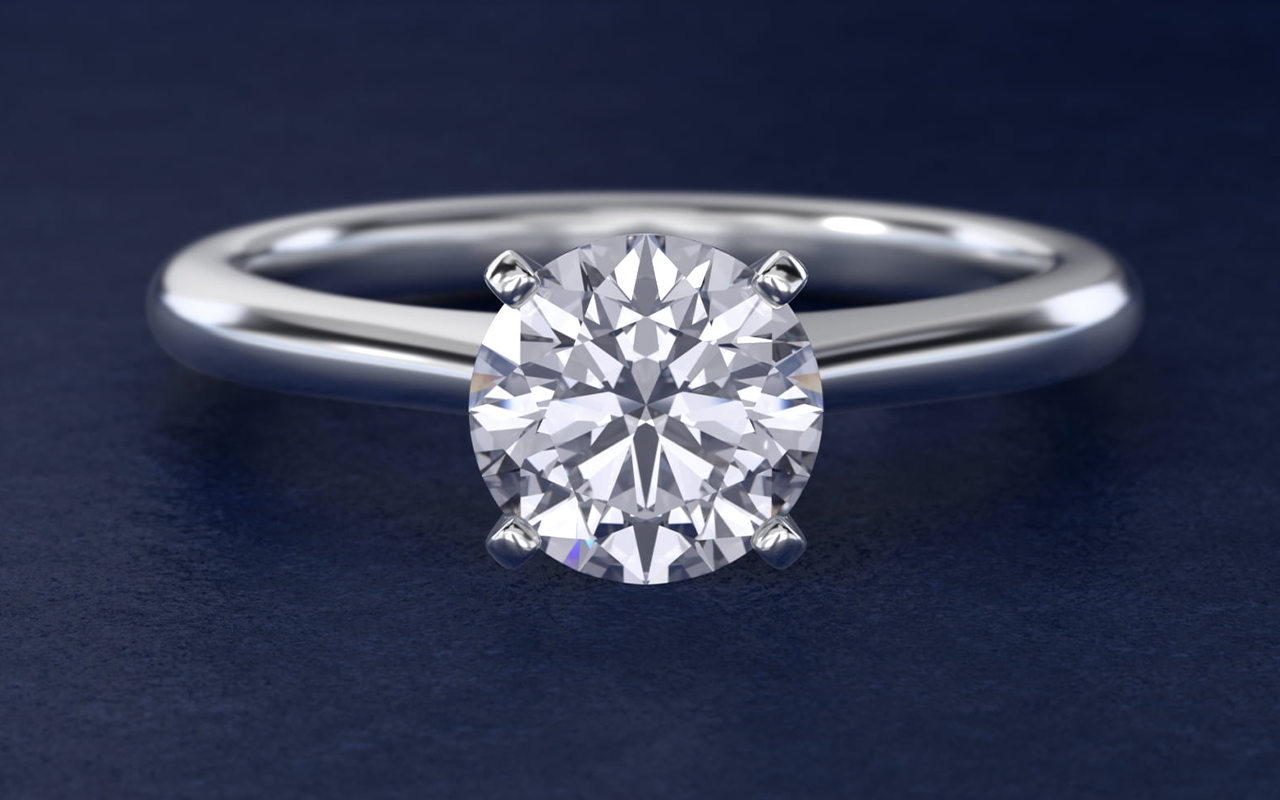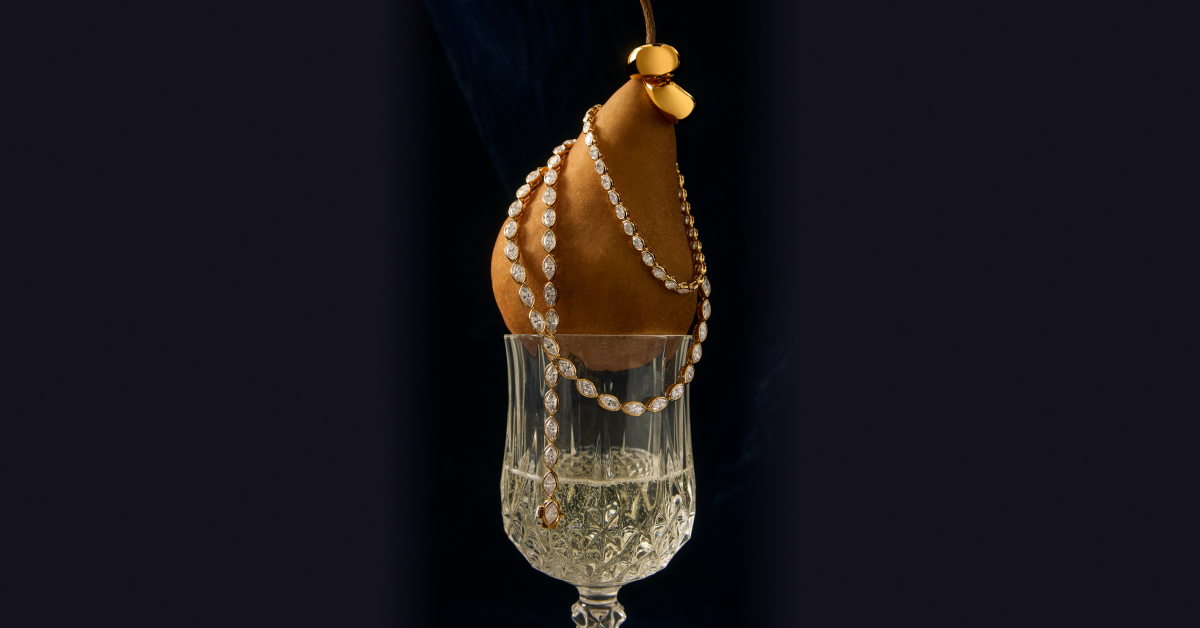An old mine cut diamond is a hand-cut, vintage gem whose rounded facets create a warm, romantic look. Popular from the 1700s through the early 1900s, old mine cut diamonds carry a unique charm and character.
Collectors and romantics alike are drawn to their antique appeal, reflecting history and craftsmanship. While this cut has a timeless elegance, recent interest has surged thanks to emerging modern trends. Below, we’ll explore what makes this cut special and what alternatives capture a similar vintage allure.
Characteristics of the Old Mine Cut
Old mine cuts stand out from modern shapes because of their handcrafted details and distinctive sparkle. If you’ve wondered what an old mine brilliant cut diamond is, the answer lies in these defining traits that made this diamond a favorite for centuries:
- Shape: The shape is typically square or rectangular with softly rounded corners, creating an early version of today’s cushion cut.
- Facets: Large, hand-cut facets emphasize depth and play of light, rather than precision symmetry.
- Internal pattern: This cut displays a broad, checkerboard-like pattern when viewed from above, unlike the splintered look of modern brilliants.
- Crown: Higher crowns elevate the diamond’s profile and enhance its antique presence.
- Pavilions: Deep pavilion angles contribute to the stone’s distinctive, chunkier appearance.
- Culet: A flat, visible culet is common, giving the diamond a small window at its base.
- Table: Smaller tables concentrate sparkle in the center rather than across the surface.
- Color: Many stones show warmer body tones, which are part of their historic charm and highlight the nuances of diamond color.
- Light: Instead of sharp brilliance, miners cut diamonds give off a softer glow with strong flashes of fire, especially under candlelight.

Should You Choose an Old Mine Cut?
Old mine cuts carry undeniable charm, but they’re not the right choice for everyone. Their antique origins and hand-cut style make them unique, though they often lack the symmetry and brilliance of modern shapes. Factors like carat weight, clarity and how well the stone has been preserved can all influence what an old mine cut diamond is worth.
For those who value heritage and romance, an old mine cut offers meaningful symbolism. On the other hand, those who prioritize precision sparkle or want maximum light return might prefer something more modern. Here’s a quick look at the main pros and cons:
Pros
- Distinctive, antique appeal and historical significance
- Handcrafted uniqueness—no two cuts are exactly alike
- Softer glow and strong flashes of fire that look stunning in warm light
Cons
- Less brilliance and symmetry compared to modern cuts
- Can appear smaller for their carat weight due to deeper proportions
- Availability is limited, which can affect selection and pricing
In the end, it’s about whether you love the vintage character more than modern precision.
Alternatives to Old Mine Cut Diamonds
If you’re drawn to the romance of an old mine cut but want to explore other options, there are both antique and modern alternatives.
Classic choices like the antique cushion cut or old European cut maintain that vintage appeal, while the round brilliant cut represents the modern evolution of diamond cutting. Each has its own look, light performance and history.
Era
Old mine cut
Cushion cut
Round brilliant cut
Old European cut
Shape
Faceting style
Brilliance
Popularity today
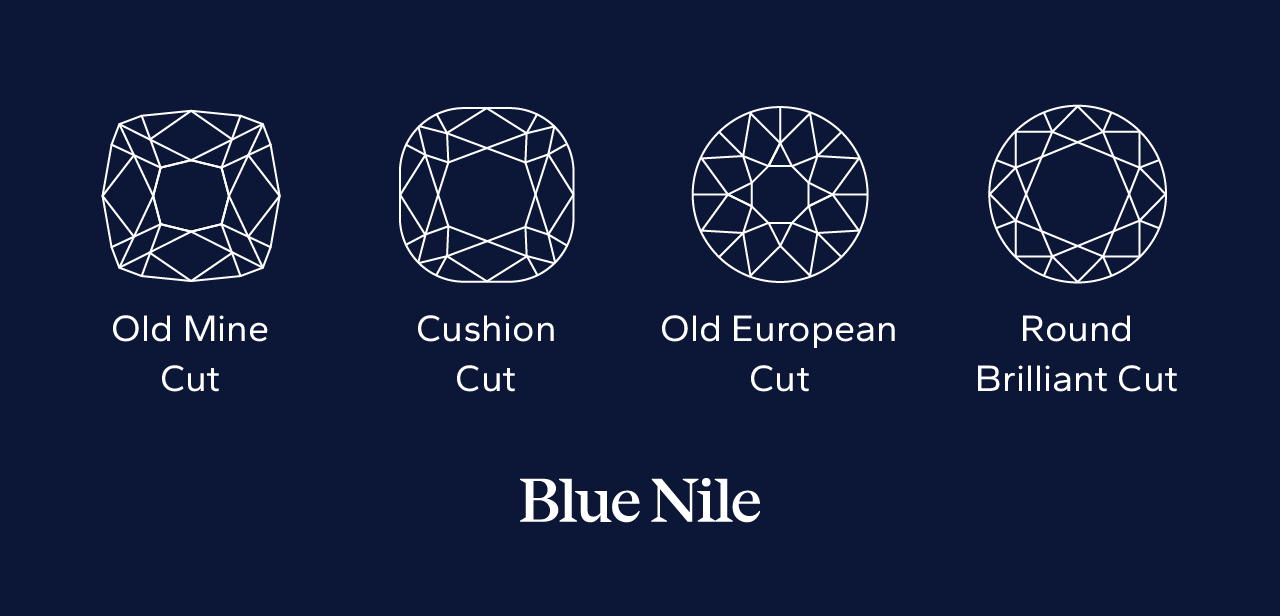
Cushion Cut Diamonds
A cushion cut combines vintage romance with modern refinement. While it descends from the old mine cut, today’s versions are more symmetrical and offer improved brilliance. Their pillow-like shape with rounded corners makes them a versatile option for both classic and modern settings.
You can also explore variations like the elongated cushion cut, which has a more rectangular profile and can make the stone appear larger. Whether they’re antique-inspired or contemporary, cushion cuts remain a favorite.
Round Brilliant Cut Diamonds
The round brilliant cut is among the most popular diamond shapes. Perfectly symmetrical, it uses a standardized 58-facet arrangement that reflects more light than earlier styles.
Evolving from the old European cut, the round brilliant took vintage brilliance to the next level. Its precise faceting and striking fire make it the go-to choice for anyone who prefers brilliance over an antique look.
Old European Cut
The old European cut bridges the gap between old mine and modern rounds. It was widely used in the late 1800s and early 1900s and features a round shape with a high crown, deep pavilion and larger culet.
While not as precise as the round brilliant cut, it offers more sparkle than the old mine cut and a unique vintage charm. Collectors often prize old European cuts for their historical legacy and warm, candlelit glow.
How the Old Mine Cut Developed into Modern Diamond Cuts
The old mine cut represents an important chapter in the history of diamond shapes. Its name comes from the old mines of Brazil and India, where these diamonds were sourced before African deposits were discovered. With its cushion-like shape and chunky facets, it was among the earliest recognizable diamond cuts.
By the late 1800s, advancements in cutting tools allowed jewelers to refine symmetry and brilliance. This shift to machine cutting eventually led to the old European cut and, later, the round brilliant cut. Today, modern diamonds are often cut with lasers for precision, but old mine cuts remain rare since each was hand-fashioned by an artisan.
Because so few were preserved, surviving examples are seen as both historical treasures and romantic heirlooms. Their rarity makes them sought-after among anyone who values authenticity and vintage character.
Old Mine Cuts in Modern Jewelry
Authentic antique old mine cuts aren’t mass-produced today, so acquiring one means shopping for vintage or estate pieces. They can be found in antique settings, from Victorian rings to Art Deco pendants, or as loose stones.
Since each was hand cut, the quality, proportions and value vary widely—making it essential to understand the 4Cs of diamonds (cut, color, clarity, carat).
One of this cut’s most appealing traits is its subtle warmth. Unlike the icy brilliance of modern cuts, old mine cut diamonds often showcase gentle body color that pairs beautifully with yellow or rose gold. Many collectors consider this one of the key warm diamond benefits that enhances their romantic, candlelit glow.
If you’re considering an old mine cut, here are a few ways to incorporate it into modern jewelry:
- Warm-toned vintage jewelry: Pair with yellow or rose gold to complement the diamond’s natural warmth.
- Bespoke jewelry: Reset a loose old mine diamond into a custom engagement ring or pendant for a one-of-a-kind look.
- Halo settings: Surround the cut with smaller modern diamonds to balance antique charm with added sparkle.
- Stacking rings: Incorporate an old mine cut into a contemporary ring stack for a mix of vintage and modern style.
Celebrate Vintage Styles with Modern Cuts
An old cut diamond is more than just a gem—it’s a piece of history, reflecting the artistry and romance of a bygone era. While they’re rare today, their unique vintage charm continues to inspire modern jewelry lovers.
If you’re drawn to the timeless look of old mine cuts, consider exploring our selection of cushion cut engagement rings, which capture a similar softness and antique appeal with modern brilliance. We offer expertly crafted designs that honor tradition while delivering exceptional quality for today’s proposals.
Frequently Asked Questions
Lab-grown old mine cut diamonds aren’t widely available since the cut is antique and typically hand-finished. However, some specialty jewelers may offer custom cutting services to recreate the vintage look using lab-grown stones.
Yes, old mine cut diamonds can be valuable, especially when well-preserved or set in original antique jewelry. Their worth depends on size, clarity and rarity, with collectors often paying a premium for exceptional examples.
Most old mine cut diamonds date back to the 1700s through the early 1900s. Their age contributes to their antique appeal and limited availability in today’s market.
Old mine cuts have chunky facets, high crowns and a softer glow, while modern cuts prioritize symmetry and brilliance. Advances in technology—like laser cutting—allow modern diamonds to maximize light performance in ways antique cuts cannot.

